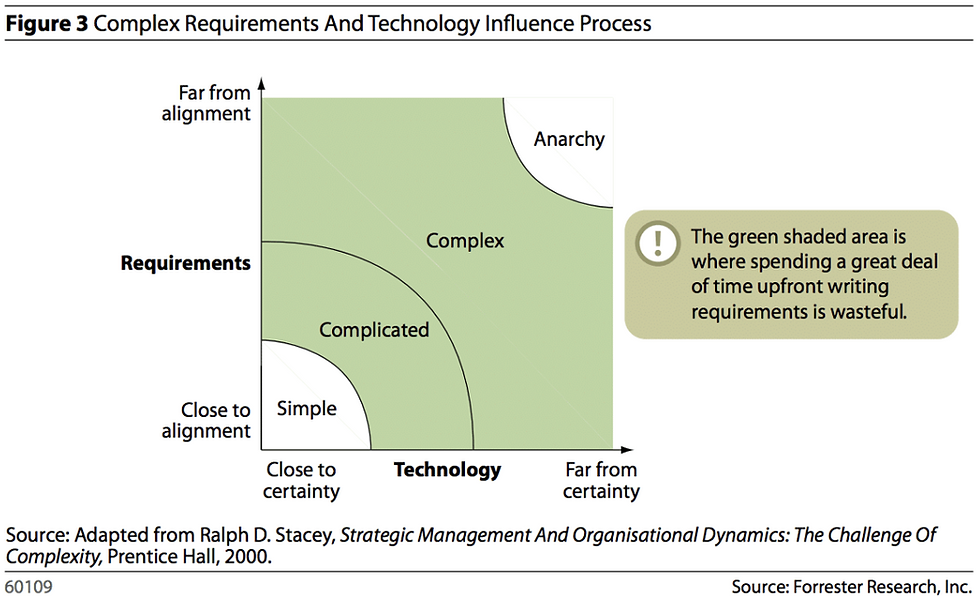Choosing the Right Project Management Methodology for a Microsoft Dynamics 365 CRM Implementation
- Violet Swierkot
- Aug 12
- 3 min read

From my recent work delivering large-scale digital transformation projects in the non-profit sector, I’ve seen first-hand that project management methodologies cannot be treated as fixed, one-size-fits-all frameworks. They need to be living, adaptable structures that change emphasis depending on the phase of the project and the realities of the environment.
This approach what I call a dynamic hybrid methodology lends the structure of waterfall with the flexibility of agile, but adjusts the ratio at different points in the project. For example, the early stages may lean on waterfall principles for governance, compliance, and budget control, while later design and testing phases shift toward agile to encourage iteration and active user feedback. The final deployment combines structured go-live planning with agile feedback loops for rapid refinements post-launch.
In the non-profit world where budgets are tight, stakeholders are diverse, and the mission is critical this adaptability ensures control without sacrificing responsiveness. It’s a methodology particularly well-suited to a Microsoft Dynamics 365 CRM rollout, which often spans multiple departments, requires cross-functional engagement, and must evolve as user needs become clearer.
Why Project Management Matters in CRM Implementations
Microsoft Dynamics 365 CRM (Customer Engagement) is a powerful, cloud-based platform designed to centralize customer data, streamline operations, and drive business growth. With core modules for Sales, Customer Insights (Marketing), and Customer Service, it integrates seamlessly into the Microsoft ecosystem, making it a natural fit for organizations already using Microsoft products.
But implementing Dynamics 365 CRM is not just a technical upgrade it’s a business transformation. The wrong methodology can lead to projects running over budget, dragging past deadlines, or delivering a solution that doesn’t meet real-world needs. Between 2012 and 2016, more than half of ERP projects went over budget and two-thirds took longer than planned. One recurring reason? Poorly chosen or poorly executed project management approaches.
The Methodology Options: Waterfall, Agile, and Hybrid

Waterfall – Sequential, plan-everything-up-front approach. Clear milestones but inflexible when needs change.
Agile – Iterative, feedback-driven approach. Flexible and responsive, but can be resource-intensive and harder to track progress.
Hybrid – Combines the best of both. Upfront planning with iterative design, testing, and refinement.
Implementation Best Practices
Assess Business Needs – Identify pain points and ensure CRM aligns with mission objectives.
Define Clear KPIs – Link success to measurable improvements in engagement, retention, and satisfaction.
Build a Strong Team – Cross-functional members with technical and operational expertise.
Ensure Data Quality – Clean data for accurate analytics and decision-making.
Provide Tailored Training – Support users before, during, and after launch.
Commit to Continuous Improvement – Keep refining post-implementation.
Final Thoughts
Choosing the right methodology is about more than following a textbook definition. For Microsoft Dynamics 365 CRM, the dynamic hybrid approach informed by real-world, non-profit sector experience offers the governance to stay on track and the agility to adapt to change. It ensures that the system not only launches successfully but continues to evolve in step with the organisation’s needs.

References
Stacey, R. D. (2000). Strategic Management and Organisational Dynamics: The Challenge of Complexity. Prentice Hall. Adapted from source material. Source: Forrester Research, Inc.
Project Management Institute. (2021). A Guide to the Project Management Body of Knowledge (PMBOK® Guide) – 7th Edition. Project Management Institute.
Axelos. (2019). Managing Successful Projects with PRINCE2® – 6th Edition. The Stationery Office.
Agile Alliance. (2001). Manifesto for Agile Software Development. Retrieved from https://agilemanifesto.org
Microsoft. (2024). Dynamics 365 Implementation Guide. Microsoft Docs. Retrieved from https://learn.microsoft.com/dynamics365
Highsmith, J. (2010). Agile Project Management: Creating Innovative Products (2nd ed.). Addison-Wesley.
Kerzner, H. (2022). Project Management: A Systems Approach to Planning, Scheduling, and Controlling (13th ed.). Wiley.
Gartner. (2023). Best Practices for CRM Implementation Success. Gartner Research.
#ProjectManagement #HybridMethodology #CRMImplementation #MicrosoftDynamics365 #DigitalTransformation #BusinessImprovement #ChangeManagement #Agile #Waterfall #NonProfitProjects #TechnologyProjects #ImpactMeasurement #DataDriven #StakeholderEngagement #PMBOK #PRINCE2 #AgileProjectManagement #BusinessConsulting #Innovation #ProcessImprovement



Comments